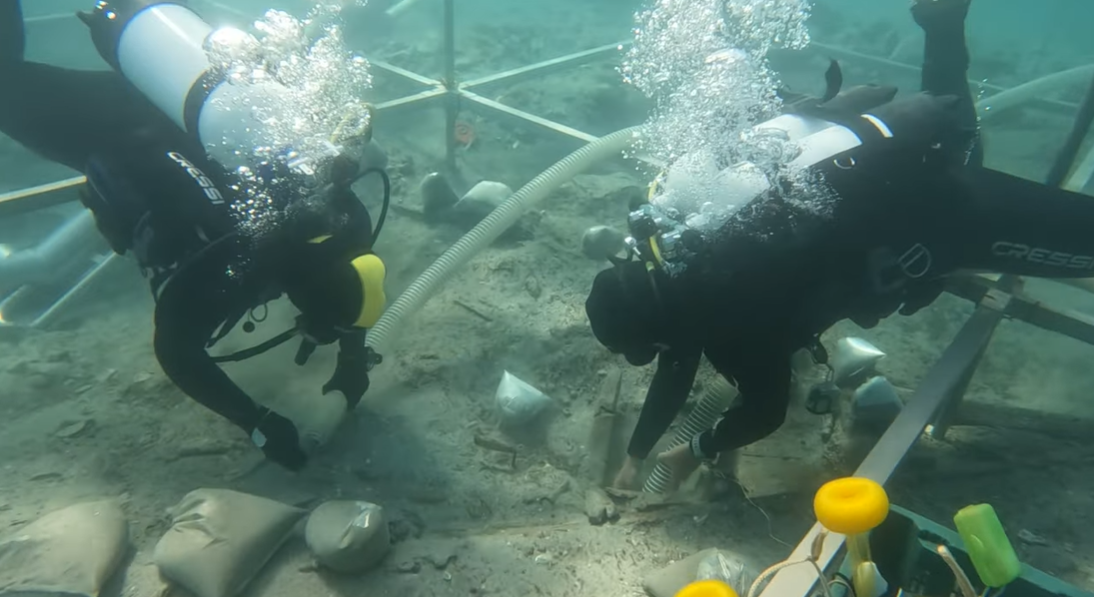Report by Samyukta Mallick
A team from the International Centre for Underwater Archaeology worked with the German Archeological Institute to uncover the remains of a 2,000-year-old ship in Sukošan (a city in Croatia). The archaeologists first found the wrecked site in 2021. Coins, which were created during Emperor Constantine’s rule, were discovered as well. These coins confirmed that the ship came from Rome.
Preliminary dating suggests that the ship dates between 1st and 2nd Century AD. After the site was found, an in-depth search revealed 9 meters of the ship’s hull (the main body of a ship). The ship is approximately three meters wide. The hull was buried in multiple layers of sand.

This hull found is close to the Roman port – Babir. The port was first discovered in 1973. There are aerial photographs which show immersed structures. Researchers suggest that Babir port was a main trading center throughout the Roman period. It seems that the ship and Babir port were built around the same time.

The archeologists uncovered 6,000 amphorae (a narrow, long vase or pot) in the ship. Certain DNA techniques (techniques used to recognize identities of humans, animals, plants and objects) can be used to find out what those pots contain.
Some parts of the ship had received a significant amount of damage due to shipworms (worms that destroy wood which is underwater). The outer frame and external parts were preserved well and have maintained their shape. Some segments of the hull were sent to France for examination and to find out whether the material is local or brought from other areas.
The ship will continue to be covered in sand until further notice. The preservation is anticipated to continue for a year. The team of archeologists and researchers intend to come back in 2023 to dive further into the investigation.
The original report can be read here. It also has a 3D model of the wreck.
Images from zadarski.hr and the website of the original research authors.

